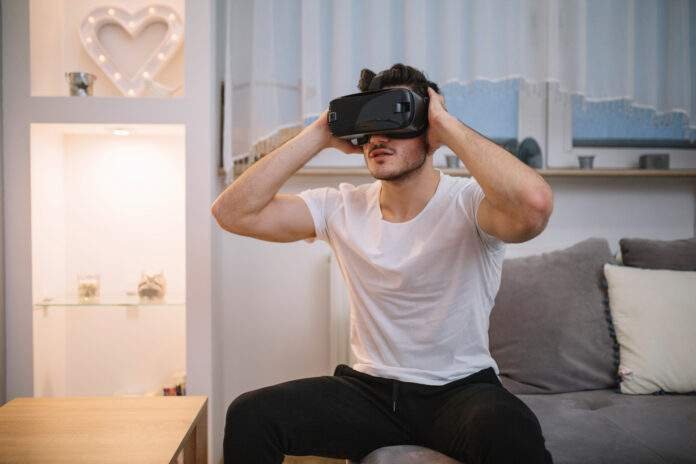Virtual Reality (VR) has revolutionized the gaming industry, creating immersive experiences that transport players into fantastical worlds. As technology advances, the potential of VR in gaming continues to expand, promising even more captivating and realistic gameplay. This article explores the future of VR in gaming, highlighting key innovations and trends to watch out for.
The Evolution of Virtual Reality Gaming
The journey of Virtual Reality gaming began with rudimentary headsets and limited interactivity. However, with the advent of more sophisticated hardware like the Oculus Rift, HTC Vive, and PlayStation Virtual Reality, the gaming experience has become more immersive. These devices provide high-resolution displays, precise motion tracking, and enhanced audio, creating a more believable virtual environment.
Key Innovations Driving Virtual Reality Gaming Forward
Haptic Feedback and Sensory Immersion
One of the most anticipated advancements in Virtual Reality gaming is the enhancement of haptic feedback. Current Virtual Reality systems offer basic vibration feedback, but future iterations aim to simulate touch, pressure, and texture. Companies like HaptX are developing gloves that provide realistic touch sensations, allowing gamers to feel the texture of surfaces and the resistance of objects in the virtual world. This level of sensory immersion will significantly enhance the realism of Virtual Reality games.
Eye-Tracking Technology
Eye-tracking technology is set to revolutionize VR gaming by enabling more natural interactions within the virtual environment. This technology allows the VR system to track where the player is looking and adjust the focus and depth of field accordingly. This not only enhances visual realism but also allows for more intuitive control mechanisms, such as selecting objects or targeting enemies with just a glance.
Wireless VR Headsets
The tethered nature of current VR headsets can be restrictive, limiting movement and immersion. However, the development of wireless VR headsets is addressing this issue. The Oculus Quest 2, for example, offers a wireless experience without compromising on performance. Future wireless VR systems are expected to provide even greater freedom of movement, making the virtual experience more seamless and engaging.
Advanced AI and Procedural Generation
Artificial Intelligence (AI) and procedural generation are poised to take VR gaming to new heights. AI can create more realistic and responsive non-player characters (NPCs), enhancing the overall gameplay experience. Procedural generation allows for the creation of vast, dynamic worlds that evolve based on player actions. This combination will result in more personalized and engaging VR gaming experiences.
The Indian Perspective: Embracing VR Gaming
India, with its burgeoning gaming community, is well-positioned to become a major player in the VR gaming industry. The country’s youth demographic, coupled with increasing disposable incomes and a growing interest in technology, makes it a fertile ground for VR adoption.
Local Developers and Innovation
Indian game developers are already making strides in the VR space. Companies like Gamitronics and XR Labs are developing innovative VR games and experiences tailored to the Indian market. These local developers are not only creating content but also pushing the boundaries of what VR can offer, incorporating elements of Indian culture and storytelling.
Government and Industry Support
The Indian government has recognized the potential of the gaming industry and is providing support through initiatives like the Digital India program. Additionally, industry bodies such as the National Association of Software and Service Companies (NASSCOM) are fostering innovation and collaboration among developers. This supportive ecosystem is crucial for the growth and success of VR gaming in India.
Challenges and Opportunities
While the future of VR gaming looks promising, there are challenges to overcome. High costs of VR equipment can be a barrier to widespread adoption, particularly in price-sensitive markets like India. However, as technology advances and economies of scale come into play, the cost of VR headsets is expected to decrease, making them more accessible.
Another challenge is the need for robust internet infrastructure to support seamless VR experiences, especially for multiplayer and online VR games. India’s ongoing efforts to improve internet connectivity, such as the rollout of 5G networks, will play a crucial role in addressing this issue.
On the flip side, the opportunities are immense. VR gaming offers a new avenue for storytelling, education, and social interaction. From virtual tourism to immersive learning environments, the applications of VR extend beyond gaming, providing new business opportunities and avenues for growth.
Conclusion
The future of VR in gaming is bright, with numerous advancements set to enhance the immersive experience. As haptic feedback, eye-tracking, wireless headsets, and advanced AI become mainstream, VR games will become more realistic and engaging. India, with its enthusiastic gaming community and supportive ecosystem, is poised to play a significant role in this revolution. As technology evolves, the boundaries between the virtual and real worlds will continue to blur, offering gamers unprecedented experiences.
Also read: THE FUTURE OF WEARABLE TECHNOLOGY: AN EXCITING REVOLUTION IN PERSONAL CONNECTIVITY











